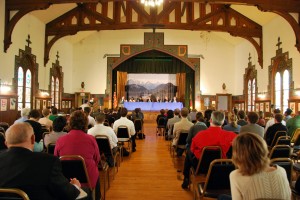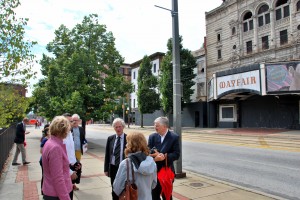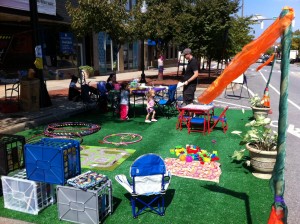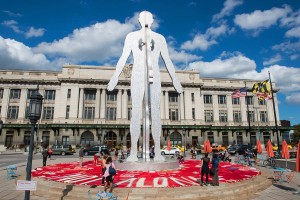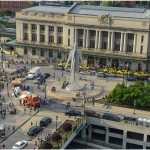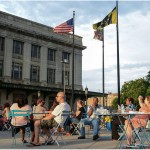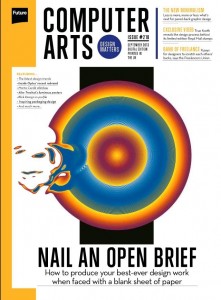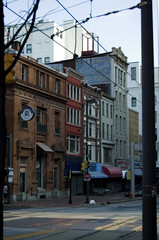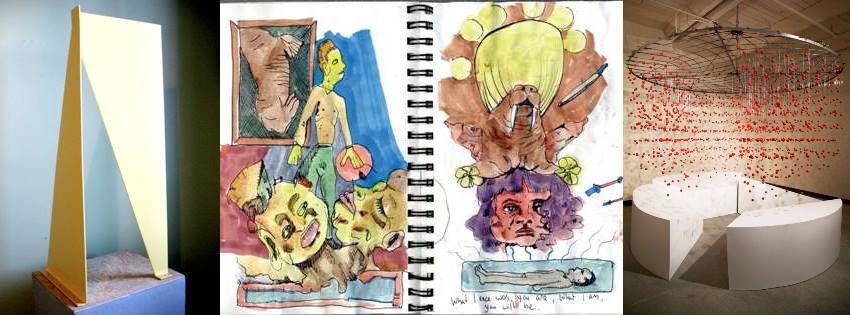Though the cold weather has arrived in Baltimore, Station North A&E District is full of activity. The most recent programming at Penn Station Plaza is the Bmore Flea market.
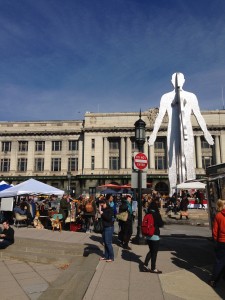
Photo credit: Bmoreflea
Bmore Flea is a juried selection of arts, crafts, antiques, vintage clothing, jewelry, hand made products, food and bar. Just in time for the holiday season, Bmore Flea takes place every Saturday in November from 10am-4pm at Penn Station Plaza, at the foot of the Man Woman Statue. The market is free and open to the public. Bmore Flea is another example of the ways in which public space can be temporarily activated with minimal alterations to the physical fabric of a given site. The market also shows the networking opportunities for small businesses and artists made possible through small repetitive events. With more than fifteen vendors each week, there is a wide selection of goods for market goers to peruse. To keep things fresh, the Bmore Flea organizers rotate vendors to mix up the selection, and to encourage vendors’ individual followings to attend the events, building the larger Bmore Flea audience. The diversity in vendors is also beneficial in that by having vendors from the Station North businesses as well as businesses from other areas of the city, new retail opportunities are delivered to shoppers, and vendors are able to extend their own professional and client networks.
Since hiring Director Priya Bhayana, the Bromo Tower A&E District is on its way toward building and strengthening its identity. The Bromo Arts District sent out its first e-newsletter on November 8th, representing an important step in creating a more robust promotional strategy for the district and the many organizations and individuals it supports. Creating a centralized location for information about events and opportunities in the district will generate interest in visiting the Bromo Tower District, foster a sense of community and cross-promotional efforts, and highlight the district’s diverse range of cultural offerings.
Three landmark intersections in the Bromo Tower District will soon receive customized crosswalks (one being installed today!) designed by local artists, thanks to a project coordinated by the Mayor’s Office, Baltimore Office of Promotion & The Arts and the Department of Transportation. Intersections and mock-ups below:
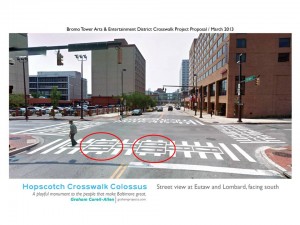 Eutaw and Lombard
Eutaw and Lombard
“the hopscotch”, designed by Graham Coreil-Allen to be installed in front of the Bromo Seltzer Tower
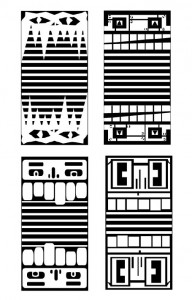 Eutaw and Baltimore
Eutaw and Baltimore
“the monster”, designed by Nolan Cartwright and Carly Bales adjacent to the Hippodrome and Everyman Theatre
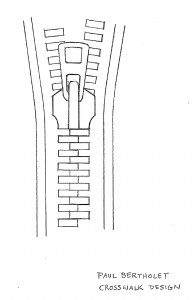 Eutaw and Fayette
Eutaw and Fayette
“the zipper”, designed by Paul Bertholet being installed today in front of the Hippodrome Theater
In real estate news – two buildings, 407 and 409 W. Baltimore St – spanning 12,500 sf – were purchased in early November with a planned investment of $1 million to redevelop the properties for retail and residential use. Interest in investing in these properties was fueled by the successful redevelopment of other along the now high foot-traffic block, and proximity to the Hippodrome, Everyman Theatre, and University of Maryland. Read the full article here!
Next year Transit plans to bring three European artists over to Baltimore for a 6-week-long residency from January to June 2014 to work together with the local community. Highlandtown A&E District has selected mmmm…, a group of artists from Spain, for the artist residency in its district. Mmmm… has been selected based on their intensive work with communities here in the U.S., plus the interactive, playful quality of their previous projects, which reflect the values and goals of the Highlandtown A&E District to create a vibrant community where neighbors feel safe to communicate with each other and have fun at the same time. A first conversation with mmmm… already took place via skype about how mmmm… might work with the Creative Alliance and Southeast Community Development Corporation. The basic idea is recreating a bus shelter on a busy crossroad that resembles a theatrical stage where the passengers could playfully interact with each other while waiting for the bus.
Also, first permits for new lighting were approved by the City (this new lighting was requested by residents because the corner, which features a bus stop, is too dark; this lighting will also light up a new mural, recently selected by a group of Highlandtown artists). Highlandtown has also received and reviewed submissions for a new mural that will go on a wall behind a bus stop (another request from residents). The selection committee included Highlandtown residents and artists. Highlandtown says: “We’re not revealing the winner just yet! We’ll keep that for December’s post”.
The Highlandtown A&E District keeps on showing spirits when it comes to gathering its community. In mid-October the Kickoff Party for the Arts District Open Studio Tour took place in the midst of the Highlandtown, a street being transformed into a bustling night time party. Shops and galleries stayed open late to feature local artist work, food and wine from local business was featured at many locations, and drummers and dancers paraded along Main Street. Beginning of November two main streets were transformed into an outdoor movie area and street party outside the Patterson Theater. One corner was focused on family fun with a projected movie, popcorn, and hula hoops. Stilt walkers, jugglers, hula hoopers, and fire performers created a magical spectacle on site. Jugglers and hoopers taught children new tricks, which inspired an impromptu youth performance!
One lesson learnt this time is to be persistent. Getting an answer about permissible improvements in public spaces isn’t always easy. Follow up with multiple calls or e-mails (respectfully!) because eventually you will get an answer!






